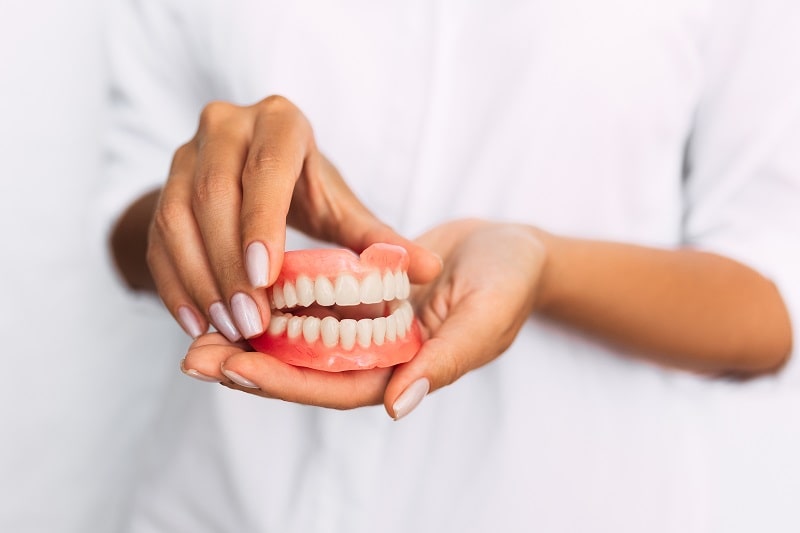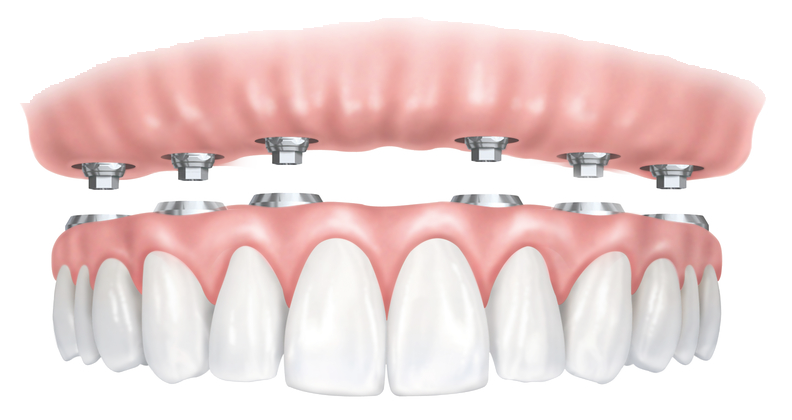Prosthetics
Prosthetics is the replacement of a tooth or part of it with a structure that is made in a dental laboratory.
There are several options for replacing missing teeth.
The treatment plan will be developed and the type of prosthetic appliance chosen on the basis of the patient’s medical indications and the status of the oral cavity.
Dentures are divided into several large groups depending on the design, and you can read more about them below.

DISTRIBUTION OF DENTURES
1. Non-removable (fixed) appliances
- Laminates – full-ceramic veneers to cover the front teeth. Laminates can be used to change the color, the shape, and slightly, the size and position of the teeth.
- Dental bridgework – a type of prosthesis used to replace missing teeth, where pontic will be attached to the existing abutment teeth. Can be produced using a wide variety of materials (see dental crown).
- Dental crown – an artificial crown (full ceramic, precious metal alloy, or zirconia) to cover the patient’s teeth for aesthetic or functional indications.
- Post and core – a post and core (from metal or fiber) will be produced to fix the artificial crown for teeth with a decomposed crown.
- Dental in-lays and on-lays – a micro-prosthesis, also known as a dental laboratory-made indirect filling, which thoroughly restores the anatomy of a single tooth. Can be produced from different materials (ceramics, precious metal alloys, zirconia).
2. Removable dentures
Partial dentures
The natural teeth of the patient have been partially preserved.
- Cast partial denture – a prosthesis with a metal frame and plastic base with accurate metal clasps as fixation elements.
- Plastic partial denture – a partial denture made of plastic.
Complete dentures
Type of prosthesis used to replace the teeth when the full arch of teeth is missing. Can be produced in a variety of plastic materials. (Acrylic resin, Deflex, Evolon). Soft lining can be inserted into the denture base.
3. Combined dentures
This type of prosthesis consists of a combined fixed and removable prosthesis. Combining these two types of prostheses provides better stability than a removable denture.
- Dentures fixed with a locking system – Artificial crowns will be placed onto the patient’s teeth with attached retention elements (locks). Missing teeth will be replaced with a removable denture attached to the locks.
- Root-supported over-denture – This denture can be used if the patient maintains few natural teeth but the root canals of the remaining teeth have been properly treated. Special retention elements (root locks) will be attached to the root canals of the patient’s natural teeth and a removable denture will be attached to these locks.
- Telescope dentures – A specially shaped metal fixture (primary crown) will be attached to existing teeth. Secondary crowns are attached to the removable part of the denture and retention takes place using frictional force between primary and secondary crowns.
4. Implant-supported dentures
We use the high-quality ANKYLOS Implant System.
Individual dental crowns as well as bridgework can be attached to dental implants. It is possible to reconstruct a full dental arch. Implant abutments can also be used to attach removable dentures. Implants are recommended as preferable when a single tooth needs replaced to avoid the neighboring teeth from grinding.
Implants offer an excellent retention opportunity for a poorly fitting full denture. This solution is called a combined denture and attaches with a locking system to implants. This treatment option gives the patient greater comfort and confidence and significantly improves quality of life.
